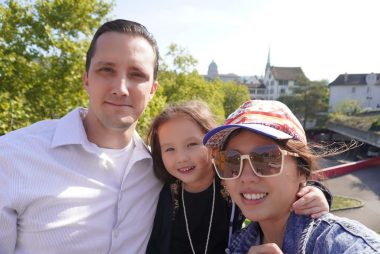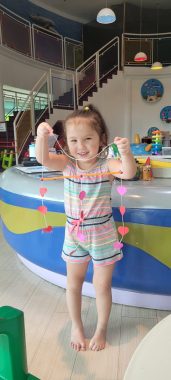Celebrating 1 Year on the Journey of Beautiful Destinations
A columnist reflects on a year of advocating and writing about AADC deficiency

In September 2021, a post came across my Facebook news feed about a freelance writing position for AADC News. My wife, Judy, and I were still very much isolated due to our daughter’s condition, but I couldn’t help but click the link.
After applying, I spoke with Matt Lafleur, the culture coordinator at BioNews (the parent company of this website) and author of the “Little Victories” column on Friedreich’s Ataxia News. He described the company’s history and columns community, explaining how it comprises people with rare diseases and their caregivers. Everyone shares the common goal of raising awareness and providing support for their rare disease community. Matt’s speech and personal story caused my heart to beat strongly and determination to flow through my veins.
During that call, I also had the opportunity to speak with Brittany Foster, the people and culture manager at BioNews. She writes the column “Recharged and Rewired” for Pulmonary Hypertension News and, like Matt, had an inspirational story. Despite the health hurdles she faces, she always puts her community and her fellow BioNews members first.
These two remarkable individuals made me question why I was isolating myself and not doing my part to raise awareness. My daughter, Rylae-Ann, was diagnosed with aromatic l-amino acid decarboxylase (AADC) deficiency in 2018, and in the three years that had passed, we’d chosen to concentrate on her. To be fair, we had to deal with severe symptoms, undergo a clinical trial for gene therapy, and take her for hip surgery.
By 2021, we were in a much more stable place. With the BioNews community behind me, Judy and I took a giant step forward into the light. I wrote my first column about our family’s AADC deficiency journey and shared it with our family and friends, many of whom were hearing about it for the first time.

The Poulin family in September 2022 as they continue on their rare disease journey. (Courtesy of Richard E. Poulin III)
Past goals
When I began writing, my primary goal was to reach families who hadn’t yet undergone gene therapy. While the incidence rate of AADC deficiency is low, the number of patients who have been able to undergo gene therapy is even lower. I decided to concentrate on pre-gene therapy life and share our stories of successes and failures.
Looking back, I’ve written several important columns that I feel are beneficial for our community. The first was about preventing aspiration. While we were waiting to undergo gene therapy, we almost lost our daughter.
The second was how to prevent hip dislocations. We worried that moving Rylae-Ann around too much would trigger what we thought at the time were seizures, but ended up being oculogyric crises. But because our daughter was hypotonic and had dystonia, her hip joint never formed correctly, and she had to have hip surgery to correct it. However, there were steps we could’ve taken to avoid this.
Finally, I wrote about the importance of early intervention. Despite our best efforts, we didn’t see much progress before gene therapy, but our actions supported greater progress afterward. How you prepare before treatment is just as important as what you do after it.

Our goal is to share our experience so others can learn and provide their children with AADC deficiency (like Rylae-Ann, pictured) a better life. (Courtesy of Richard E. Poulin III)
New life
Later I began to open up more about our gene therapy experience. I wanted to offer hope and information about what to expect from the therapy.
I wrote two notable columns about this. The first was a review of the first exercises after gene therapy. There was no official guide for what to do after this novel treatment. We learned a lot as we went, but with our backgrounds as educators, my wife and I were able to develop a system that worked. We also reached out to other rare disease and special education groups to learn and adapt the methods that worked for them.
The other notable column was about pushing through therapy sessions. We did many therapies: physical therapy, occupational therapy, speech therapy, swim therapy, horse therapy, and sensory integration. We had to help our daughter push through every session because of her high anxiety. Over time, she learned to enjoy them and made substantial progress. That wouldn’t have been possible if we’d quit because she was scared or screaming.

Rylae-Ann shows off her arts and crafts project she made in class. (Courtesy of Richard E. Poulin III)
Next year
I’m not a writer by trade, but I’m a passionate father of a child with AADC deficiency and have become an outspoken advocate for rare diseases. After opening up about our journey, several successes came our way. We’ve completed several talks, hosted parent workshops, raised awareness about rare diseases, and even started a nonprofit organization.
In the next year, I aim to continue improving my writing skills to better educate and support other families. Another goal is to encourage other families to reach out. The more leaders we have, the more hope there is for our rare disease community.
I want to close with inspiration Retired U.S. Navy Adm. William H. McRaven shared during a 2014 commencement speech at the University of Texas, which he later encapsulated in his book “Make Your Bed: Little Things That Can Change Your Life … and Maybe the World.”
“The average American will meet 10,000 people in their lifetime. That’s a lot of folks. But if every one of you changed the lives of just 10 people — and each one of those people changed the lives of another 10 people — just 10 — and another 10, then in five generations, 125 years, the class of 2014 will have changed the lives of 800 million people. …
“If you think it’s hard to change the lives of 10 people — change their lives forever — you’re wrong. … Changing the world can happen anywhere and anyone can do it. So, what starts here can indeed change the world, but the question is, what will the world look like after you change it? Well, I am confident that it will look much, much better.”
Note: AADC News is strictly a news and information website about the disease. It does not provide medical advice, diagnosis, or treatment. This content is not intended to be a substitute for professional medical advice, diagnosis, or treatment. Always seek the advice of your physician or other qualified health provider with any questions you may have regarding a medical condition. Never disregard professional medical advice or delay in seeking it because of something you have read on this website. The opinions expressed in this column are not those of AADC News or its parent company, BioNews, and are intended to spark discussion about issues pertaining to aromatic l-amino acid decarboxylase deficiency.






Comments